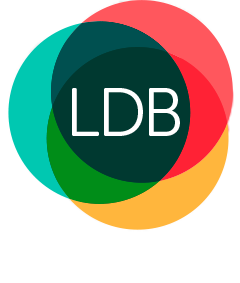What you need to know about Transfer Balance Account Reports (TBAR) for self-managed superannuation funds
October 10, 2019

If you have a self-managed super fund (SMSF) and are looking to draw an income from it soon, then you need to know about Transfer Balance Account Reports (TBAR).
A TBAR is a form that your super fund must lodge to the Australian Taxation Office (ATO) about any events that affect a member’s transfer balance account, as required under a new system called events-based reporting.
Anyone who has recently started to take an income stream from your super fund, who has recently retired or will soon turn 65 also need to take note of these forms.
What needs to be reported?
The commencement of new retirement phase income streams
When a member has:
- an existing Transition to Retirement Income Stream (TRIS) and has retired; or
- retired from the work force and started a new income stream; or
- reached age 65 and has started a new income stream in the retirement phase.
The superannuation fund must report to the ATO the value of the member’s benefits which are being transferred from accumulation phase to retirement phase.
The value of this new retirement phase income stream will be credited to the member’s transfer balance account, reducing the value of transfers a member can make into the tax-exempt retirement phase in the future.
Example one: Judy has retired and wishes to commence a new pension using her $500,000 balance in her superannuation fund.
Judy’s transfer balance: $0
Add Judy’s new pension: $500,000
Judy’s new transfer balance: $500,000
Drawings of lump sums from retirement phase income streams
If a member wishes to draw an extra amount from their retirement phase income stream, they can opt to classify it as a lump sum drawing. This will reduce their current transfer balance.
Where a member has already drawn their minimum pension and wishes to draw further benefits from the fund, it may be advantageous to classify these extra drawings as lump sums rather than pensions.
The value of a lump sum drawing will be debited against a member’s transfer balance account, decreasing their current transfer balance and increasing the value of transfers a member can make into the tax-exempt retirement phase in the future.
Example two: Kevin transferred $900,000 into a retirement phase income stream. He has drawn his minimum pension for the year but wishes to draw $40,000 to purchase a new car.
Kevin’s transfer balance: $900,000
Less Kevin’s lump sum withdrawal: $40,000
Kevin’s transfer balance: $860,000
Stopping a retirement phase income stream
Should a SMSF member decide to cease their retirement phase income stream and return their benefits back to the accumulation phase, the superannuation fund must report the value of the retirement phase income stream at the time the member elects to cease receiving their benefit.
The value of the retirement phase income stream will be debited against a member’s transfer balance account, decreasing their current transfer balance and increasing the value of future transfers.
Example three: David has decided to return to work and no longer needs to draw a retirement phase income stream from his superannuation fund. The value of David’s pension at commencement was $600,000 and is now $400,000.
David’s transfer balance: $600,000
Less David’s balance when income stream stops: -$400,000
David’s transfer balance: $200,000
When do I need to report by?
The deadline for reporting events depends on the balance of all members of the fund across all of their superannuation funds.
If any member of the fund has a balance above $1,000,000 and a member of that fund commences a retirement phase income stream, the fund is classed as a quarterly lodger. The fund has 28 days after the end of the quarter during which the event occurred to lodge the TBAR. For example, if the event happens on 15 August, the fund has to lodge by 28 October.
For superannuation funds commencing pensions where all members have balances below $1,000,000, the superannuation fund is classed as an annual TBAR lodger. The fund must lodge the TBAR by the date of that year’s income tax return, typically 15 May.
Once set, the fund’s TBAR lodgement class will not change if your circumstances change, so if you lodge annually when you start drawing an income stream, you will always be an annual lodger, even if your balance grows beyond $1,000,000.
How is a TBAR prepared and lodged?
Typically, trustees need to prepare a 12-page TBAR form and post it to the ATO.
However, LDB can prepare and lodge TBAR forms electronically on your behalf. Our superannuation fund accounting software prepares and lodges your TBAR form electronically, significantly speeding up a process that would otherwise entail manually filling in and posting a lengthy paper form.
What happens if a mistake is made?
If a mistake is made, you must lodge a cancellation of an event with the ATO using the TBAR form as soon as possible.
The ATO’s paper forms make correcting a mistake in a TBAR needlessly complicated. LDB’s systems can lodge a TBAR cancellation request with the click of a button, making TBAR cancellations effortless.
LDB is here to help
Events-based reporting is a complicated system, so do not hesitate to seek the help of our specialist SMSF accountants at LDB.
It’s important to keep on top of your TBAR reporting obligations, particularly if you need to report on a quarterly basis, as the ATO will issue penalties for late lodgements.
If you need assistance with other areas like creating a new SMSF, allowable tax deductions for SMSF members or audit obligations, our team can help as well.
For more information, call us on (03) 9875 2900 or fill out the form below.
